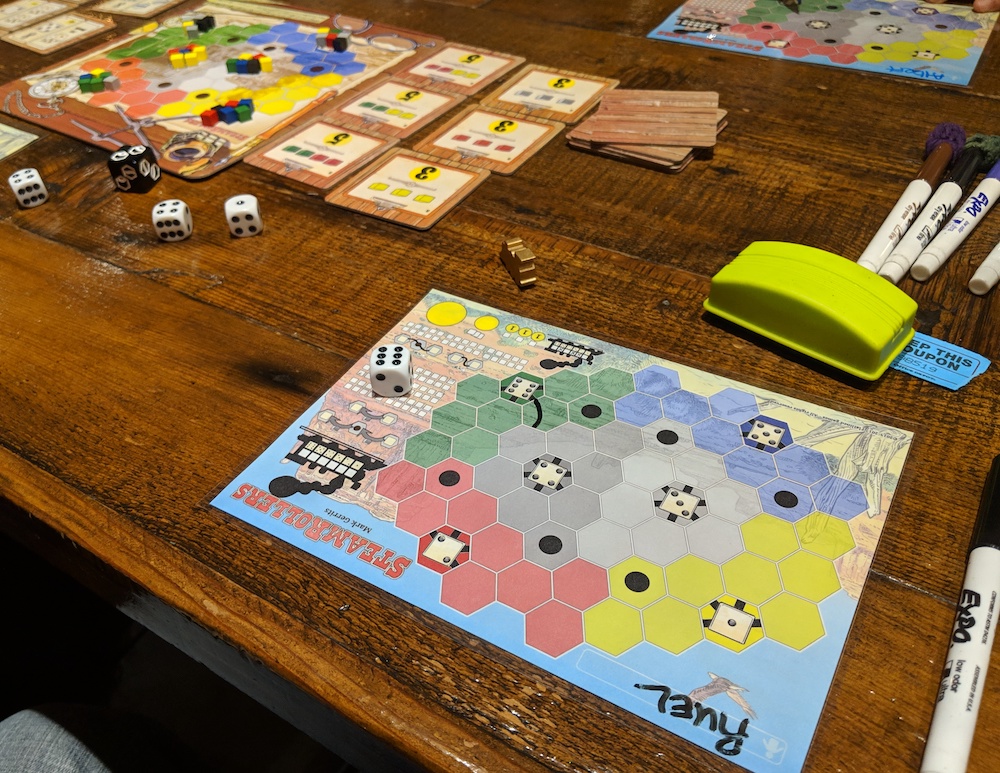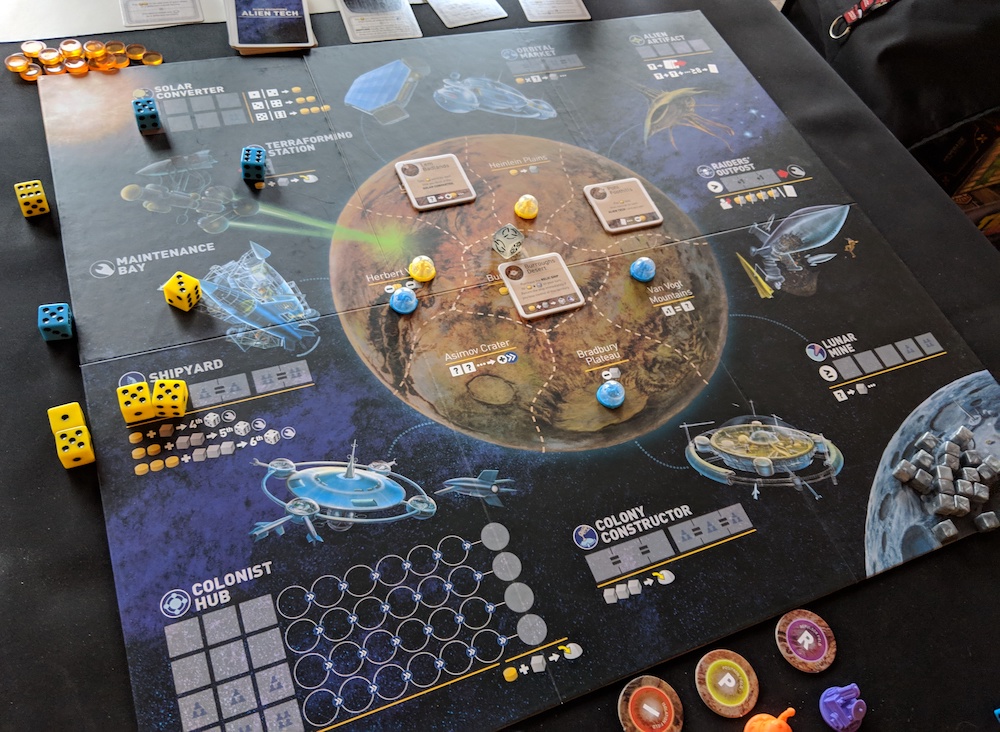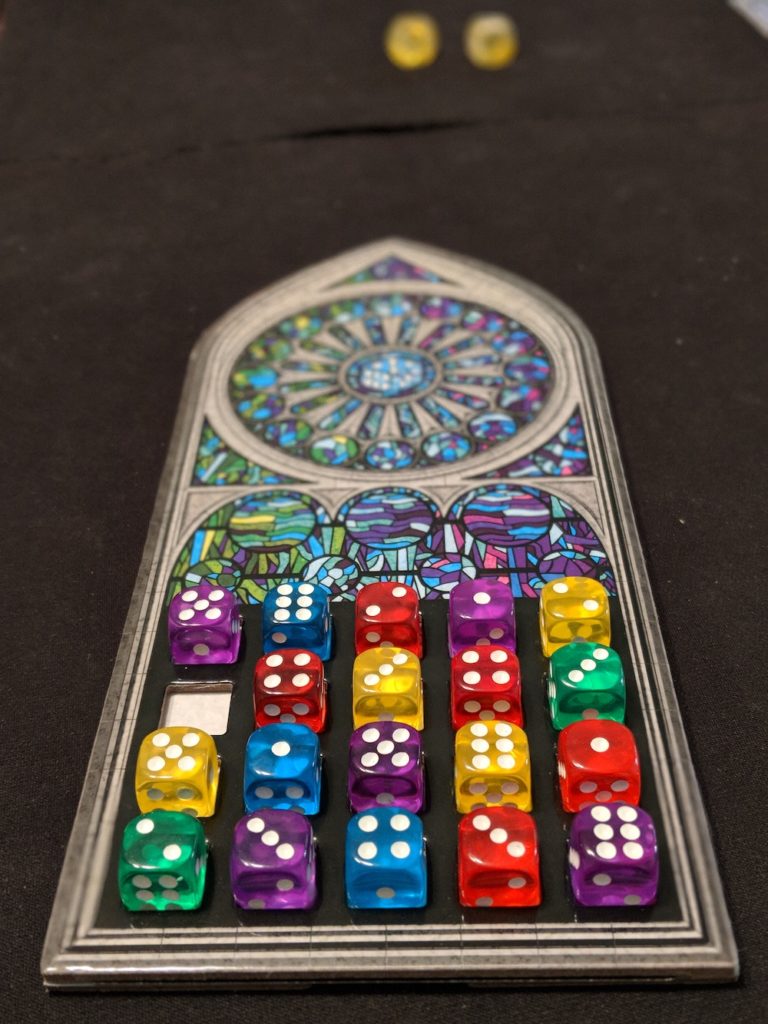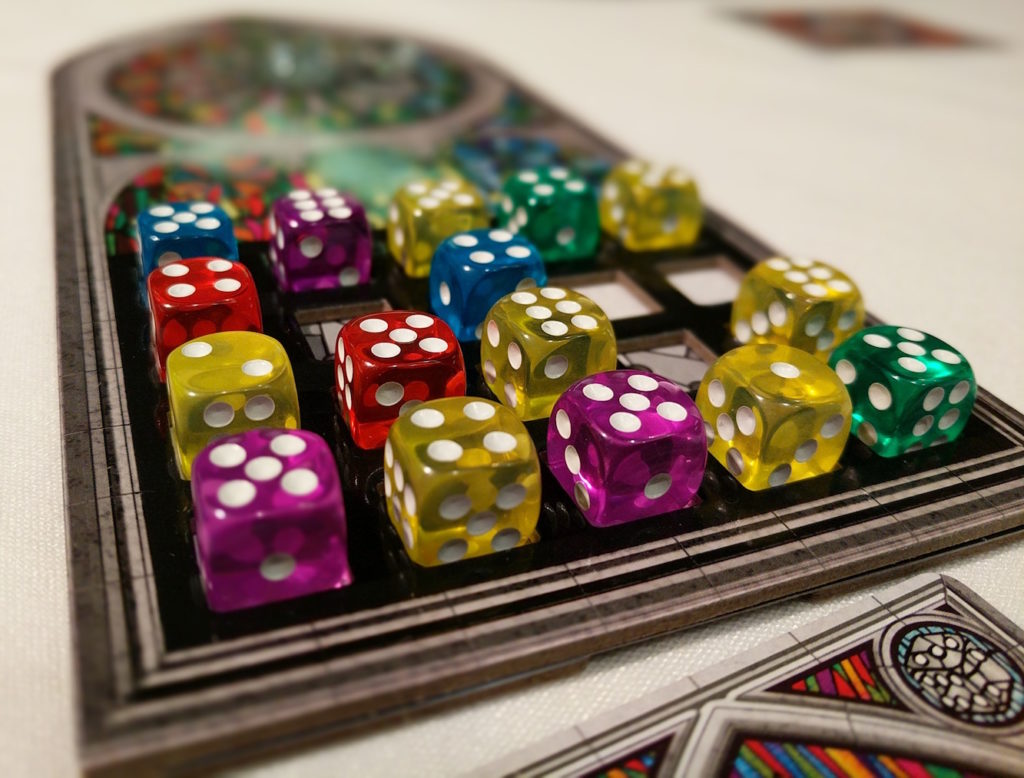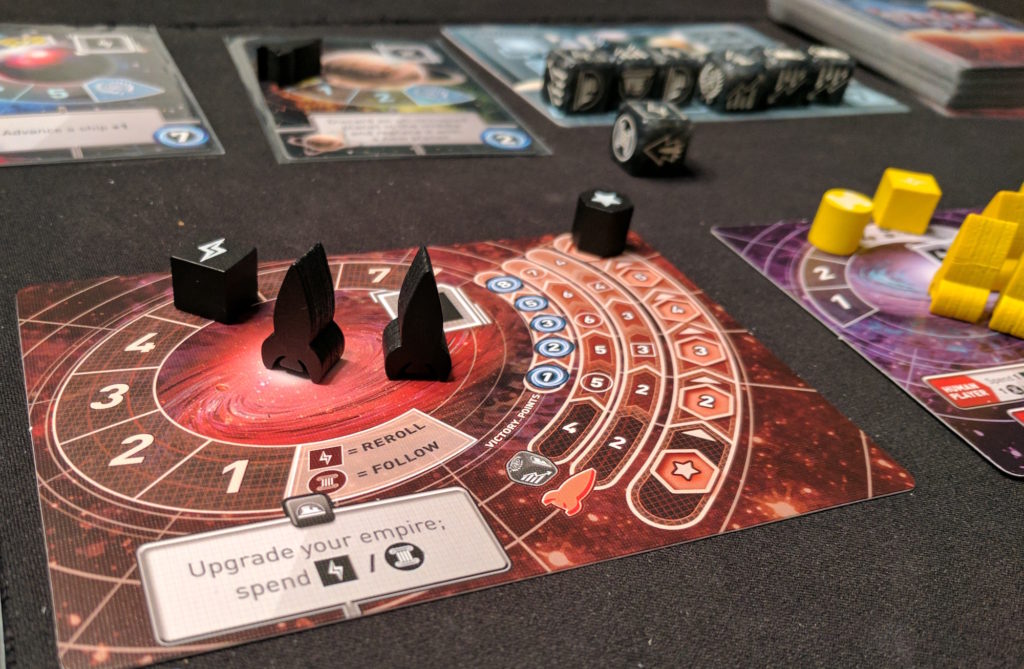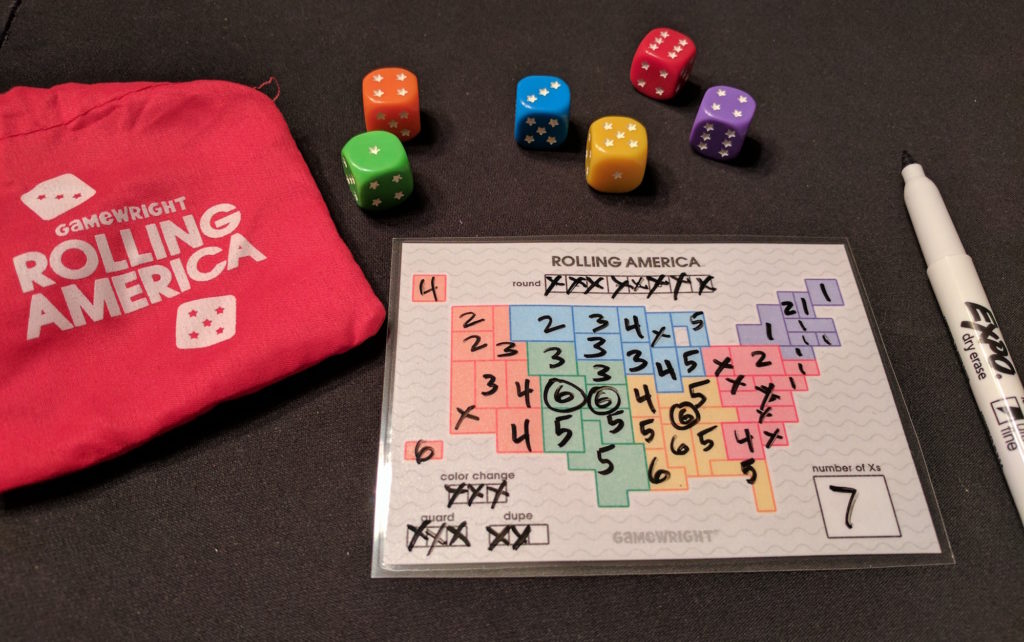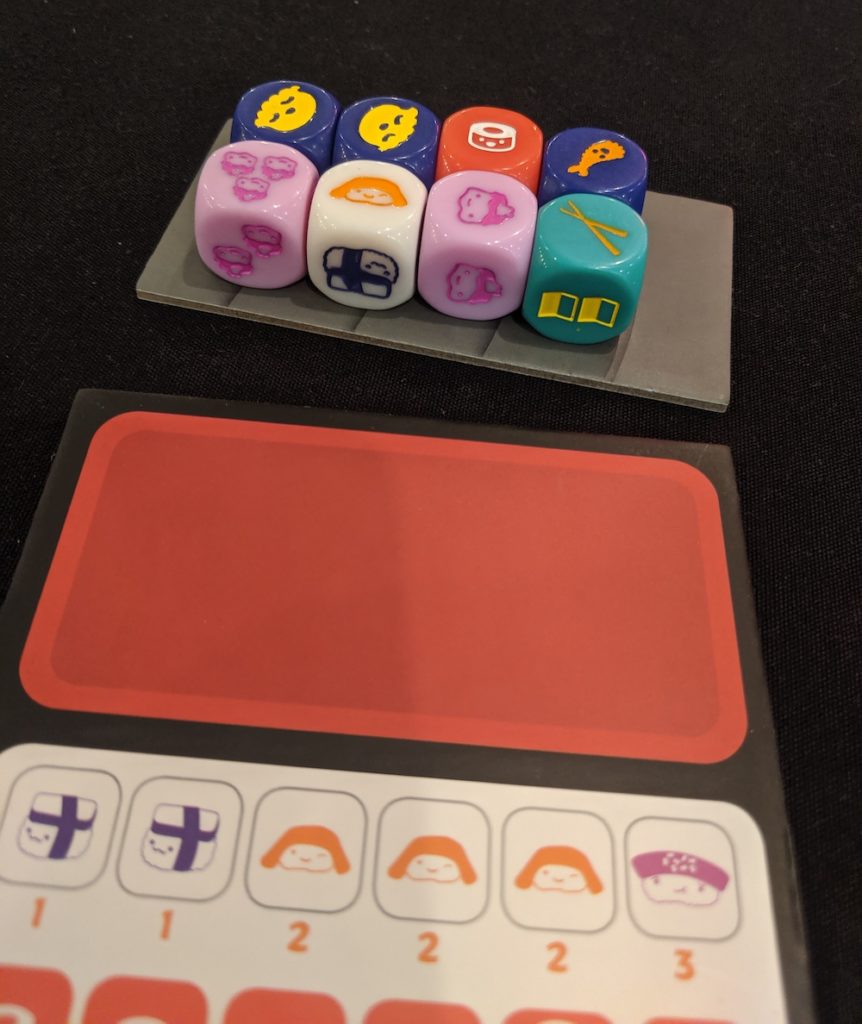
I’m blogging every day this month. Some will be game-related, but this challenge is different than my most recent play-a-game-and-blog-about-it challenge. I’m writing a single post every day: no topic guidelines, with some posts being a collection of random thoughts. Click here to read yesterday’s post.
Sushi Go! was one of the first “hobby” games I bought when I first started getting into tabletop gaming. I put hobby in quotes because even though you can easily find Sushi Go! at Target and other retail outlets, back in 2015 I didn’t know that. I thought only gamers would buy this game of odd-looking cards.
I’m glad I bought it and will always play a quick game of it or its bigger brother, Sushi Go! Party, which has a lot of new cards for a different gaming experience every time you play it.
Recently, Sushi Go! publisher Gamewright released the dice version of Sushi Go!, the appropriately named Sushi Roll. Instead of the cute cards of the original game, it’s all dice in this version.
After a half-dozen plays I have two main things to say about Sushi Roll:
- It’s not as pretty as the original . There’s no way to transfer those gorgeous drawings from the cards onto the dice. But the dice do contain the familiar icons of the dumplings, shrimp tempura, and desserts.
- I now prefer it to the original in terms of set-up (which can be way too long with Sushi Go! Party) and play time. Sushi Roll is a quick game: roll dice, pick one to keep, pass to your neighbor, rinse, and repeat.
Like the original, you’re trying to collect sets for more points. For example, whoever has the most maki rolls on their dice will score six points at the end of the round. Same goes for halibut, etc. It’s fun rolling all of the chunky dice and trying to get what you need to complete a set such as shrimp tempura. If you didn’t have a lucky roll of the dice, you can still turn in a menu to re-roll any number of dice.
You can also use chopsticks to steal one die from another player. Just turn in your chopsticks token, take another player’s die, and put one of your dice onto their player board. After three rounds, victory points are added and the most points wins.
Sushi Roll is another winner for Gamewright for both fans and non-fans alike. And maybe it’s just me, but I’m totally craving sushi right now.

